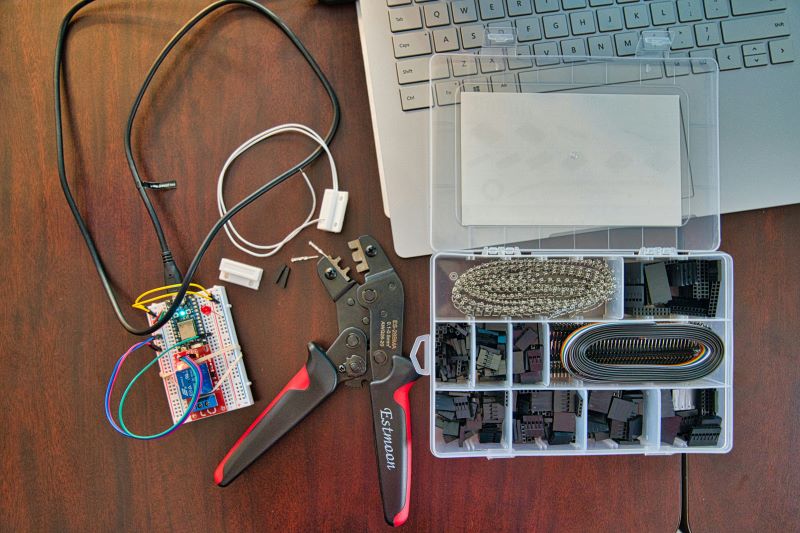The Internet of Things (IoT) represents a massive network of connected devices, each smart enough to communicate without human intervention. As IoT proliferates across sectors, QR codes emerge as a pivotal tool in bridging connectivity and enhancing the functionality of these devices.
IoT connects everyday objects to the internet, allowing them to send and receive data. This interconnectedness is becoming increasingly crucial as businesses and consumers alike seek more efficient and automated solutions. The integration of QR codes with IoT devices facilitates easier control and monitoring, proving essential in today's tech-driven world.

The Role of QR Codes in IoT
● Efficient Device Configuration
QR codes streamline the setup process for IoT devices. By encoding critical configuration data within a QR code, these devices can be automatically set up with a quick scan, bypassing the need for complex manual configurations.
● Easy Access to Information
QR codes can store or link to a wealth of information including user manuals, maintenance records, or operational guidelines, which can be instantly accessed by scanning the code. This is particularly useful for maintenance staff or operators who need quick access to device documentation without having to manually search for paper files or navigate through multiple digital folders.
● Enhanced Interactivity and Engagement
In consumer-facing applications, QR codes can enhance user interaction with IoT devices. For example, QR codes on home appliances can link to interactive guides, recipes, or even remote control interfaces, thereby enhancing the user experience.
Cost-Effective Solutions for IoT Challenges
Compared to other technologies like RFID (Radio Frequency Identification) or NFC (Near Field Communication), QR codes are less expensive to generate and do not require specialized hardware, making them an economically viable option for businesses. This cost efficiency also extends to scalability, particularly in logistics and supply chain management, where QR codes help track goods without significant investment.
Innovative Applications of QR Codes in IoT
In diverse fields such as healthcare, consumer electronics, and home appliances, QR codes are playing a transformative role. For instance, smart refrigerators can display QR codes that link to troubleshooting guides or reorder groceries. In healthcare, patient bracelets with QR codes can provide quick access to medical records, improving service efficiency and patient care.
● Commercial and Industrial Applications
In sectors such as manufacturing and retail, QR codes facilitate extensive inventory management and asset tracking. They provide a straightforward, error-free method to access information about products and equipment instantly, streamlining operations and reducing overhead costs.
● Consumer Engagement Strategies
QR codes enhance consumer engagement by providing direct access to product information, promotional offers, and interactive content. A notable example includes Diageo's campaign where scannable codes on bottles enabled consumers to access cocktail recipes, thereby enriching the customer experience and fostering brand loyalty.
How to Generate a QR Code for IoT?
To create a QR code for IoT applications, you can use our QR code generator.
Users can input their desired data into the QR code generator, customize the design, and download the result for immediate use. This ease of creation supports rapid deployment and integration within any IoT setup.
In conclusion, the integration of QR codes within IoT devices offers a multitude of benefits, including enhanced operational efficiency, reduced costs, and improved user engagement.
As industries continue to innovate, the adoption of QR codes in IoT applications looks set to grow, driving forward the digital revolution. Create your first QR code with our QR code generator now and unlock the full potential of your IoT devices!
FAQs
1. How do QR codes improve the efficiency of IoT device setups?
QR codes can store all necessary configuration data, reducing the time and potential errors associated with manual entries.
2. Are there security risks associated with using QR codes in IoT?
While QR codes are generally secure, they can be susceptible to manipulation if not properly encrypted or if they link to insecure websites. It’s vital to implement security measures like data encryption and secure URL practices.
3. Can QR codes be used for large-scale IoT networks?
Yes, QR codes are scalable and can manage extensive networks of IoT devices, particularly useful in industries like manufacturing and logistics.




